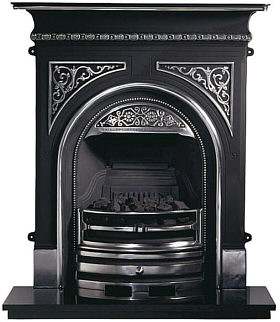In England, the fireplaces were recognizable as early as from the 12th century. Initially, the fireplace was an open fire on the ground in the centre of a house positioned against the wall. In the beginning years, it was made of marble or slate chimney pieces but later on was made of cast iron frames with tilesets on its side along with a mantle that was made from slate or pine.
For the Victorian people, fireplaces were the main source of getting heat during the freezing cold weather. The fireplaces and stoves were generally found in every room of the Victorian homes. Though there was steam heat available since 1850.

Many could not afford to have a central heating and those who could afford it also preferred to have a fireplace when the temperature would at times dip down below normal. Fire mantels were made of wood, marbles or slate painted to look like marble. The fireplace had become a vital part of the Victorian houses and was often decorated to impress the visitors.
The fireplaces of the Victorian era can be divided into two main types
- the early Victorian fireplaces and
- the late Victorian fireplaces.
The early and the mid-Victorian firepalces were decorated with a floral pattern to the casting.
In the late Victorian era, the designs changed from the floral pattern to a cleaner and simple look. The antique marble fireplace and wood fireplace designs are an excellent example of the skilled craftsmen during that time.
Along with the fireplaces, the fire screens also became a ornamented piece. These fire screens till the 18th century were not a necessity though it existed a long time before that. Fire screens were basically used to direct the heat in the desired direction.
The screens were also a way in which the women showed off their decorating skills and these soon became work of art. The frames and the feet of the screen were made from mahogany, satinwood, or even rosewood and were excellently carved. The screen was made from solid wood, fabric, stained glass and paper-mache.
Fire screen made of solid wood could be hand painted, gilded or collaged by using various types of pictures which were glued on and then varnished over. A panel made out of fabric could be ornamented using a wide range of items and even embroidered tapestries were used at times.